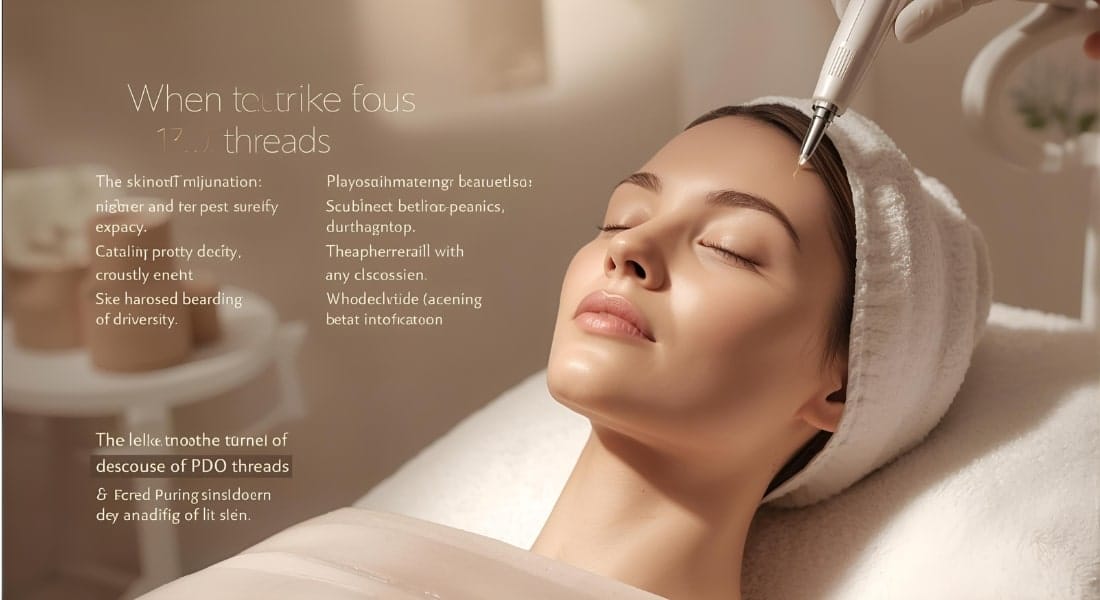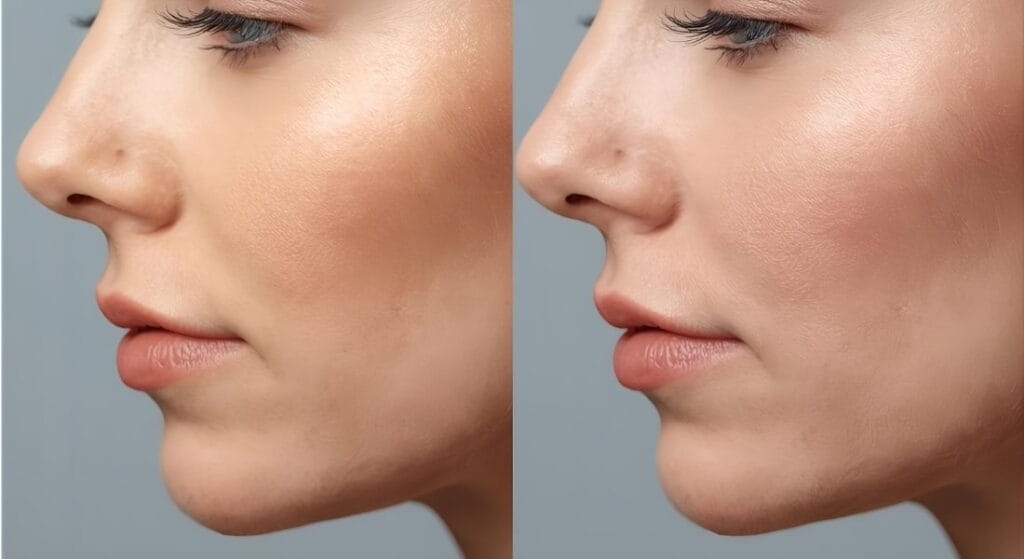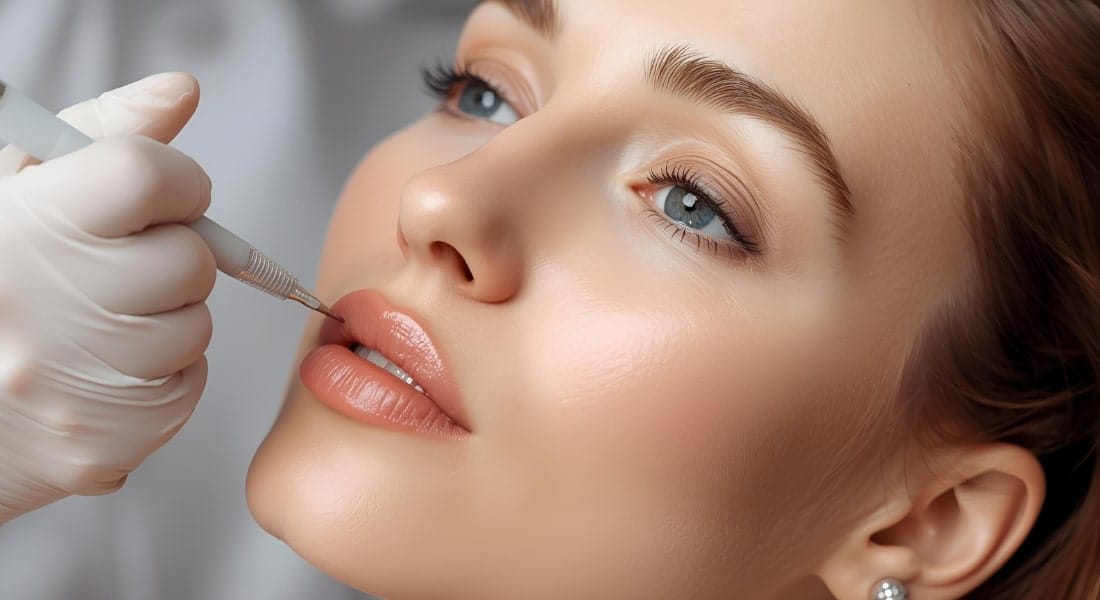The non-surgical aesthetic market has undergone a remarkable transformation, with an ever-expanding portfolio of treatments designed to address the signs of aging without the invasiveness of surgery. At the forefront of this revolution are two powerful yet distinct modalities: PDO (Polydioxanone) threads and dermal fillers. For dermatologists, plastic surgeons, and clinic owners, a nuanced understanding of PDO threads vs dermal fillers is not just an academic exercise; it is a critical skill for creating bespoke treatment plans and delivering optimal patient outcomes.
This article provides a detailed, B2B-focused comparison of these two leading non-surgical options. We will break down their mechanisms, clinical applications, longevity, and patient suitability, enabling you to confidently determine which treatment is the best fit for your patients’ unique needs. We will also introduce the advanced product portfolios from Aakaar Medical Technologies Ltd, including the versatile Aqulift PDO Threads and the highly effective Saypha Dermal Fillers, as essential tools in your clinical practice.
What Are PDO Threads?
Polydioxanone (PDO) threads are bio-absorbable surgical sutures that have been a staple in medicine for decades. In aesthetic medicine, they are used to create a non-surgical facelift, a procedure that provides both an immediate lifting effect and long-term skin rejuvenation.
Mechanism and Applications
The mechanism of a PDO thread lift is twofold:
- Mechanical Lift: When inserted into the subcutaneous layer of the skin using a cannula, barbed or cogged threads physically anchor and lift sagging tissue, providing an instant re-contouring effect.
- Collagen Stimulation: Over a period of 6-9 months, the threads are gradually absorbed by the body. This process triggers a controlled inflammatory response that stimulates the production of new collagen and elastin, strengthening the skin’s structure and improving its elasticity and firmness over time.
This dual action makes PDO threads for skin tightening an excellent solution for patients with mild to moderate skin laxity. Their primary applications include:
- Lifting sagging jowls and jawline contouring
- Reducing the appearance of nasolabial folds and marionette lines
- Lifting the mid-face and cheeks
- Brow and neck lifting
- Improving skin texture and tone
Aakaar Medical Technologies Ltd offers a comprehensive range of Aqulift Threads, which includes various types tailored for different clinical needs. The Aqulift COG Master Gear Threads and Aqulift COG Threads-I and II are designed for powerful lifting and anchoring, while the Aqulift Double Screw Threads and Aqulift Mono Threads are ideal for skin tightening, volumizing, and stimulating collagen in more subtle ways.
What Are Dermal Fillers?
Dermal fillers are injectable, gel-like substances used to restore lost volume, fill wrinkles, and enhance facial contours. The most common type of dermal filler is made from hyaluronic acid (HA), a naturally occurring substance in the body that helps the skin retain moisture and plumpness.

Mechanism and Applications
The primary mechanism of dermal fillers is volume restoration. When injected into specific areas, they physically fill hollow spaces, smooth out static wrinkles, and add definition to facial features. They work by attracting and holding water, which contributes to their plumping effect.
Dermal fillers are best suited for addressing concerns related to volume loss. Their key applications include:
- Filling deep wrinkles and folds, such as nasolabial folds and marionette lines
- Restoring volume in cheeks and temples
- Augmenting and defining lips
- Filling under-eye hollows (tear troughs)
- Enhancing jawline and chin contours
The Saypha Dermal Fillers range, offered by Aakaar Medical Technologies Ltd, provides a versatile portfolio of products to address various needs. Saypha Rich is a mesotherapy product for fine lines and skin hydration, while Saypha Filler with lidocaine, Saypha Volume with lidocaine, and Saypha Volume Plus with lidocaine offer a graduated range of viscoelasticity for correcting moderate to severe wrinkles, adding volume, and providing robust facial contouring, all with enhanced patient comfort.
PDO Threads vs. Dermal Fillers: Key Differences
To provide your patients with the best aesthetic results, it’s essential to understand the fundamental difference between threads and fillers. While both are injectable, minimally invasive treatments, their primary goals and mechanisms are distinct.
| Feature | PDO Threads | Dermal Fillers |
| Primary Goal | Lift & Tighten | Restore Volume & Fill |
| Mechanism | Mechanical lift + collagen stimulation | Volume replacement |
| Best Suited For | Mild-to-moderate skin laxity (sagging) | Volume loss, deep wrinkles, folds |
| Ideal Areas | Jawline, jowls, neck, brows, mid-face | Cheeks, temples, lips, nasolabial folds, under-eyes |
| Longevity | 12–18 months (with continued collagen benefits) | 6–18 months (depending on formulation) |
| Downtime | 3–7 days (potential for swelling, bruising, tightness) | 1–3 days (mild swelling, bruising at injection sites) |
| Side Effects | Swelling, bruising, dimpling, temporary tightness | Swelling, bruising, redness, lumpiness (rare) |
| Patient Age | Generally 30s–50s (starting to see skin laxity) | All adult ages (for contouring, anti-aging) |
| Key Ingredient | Polydioxanone (PDO) | Hyaluronic Acid (HA) |
Treatment Goals and Patient Suitability
The choice between the two fundamentally comes down to the patient’s primary concern. If a patient is primarily bothered by sagging jowls or a drooping brow, their concern is skin laxity. In this case, a PDO thread lift is the ideal choice, as it physically repositions the tissue and provides a lifting effect that fillers simply cannot. Conversely, if a patient complains of hollowing under their eyes, deflated cheeks, or deep nasolabial folds, their concern is volume loss. Here, a dermal filler is the most direct and effective solution.
Longevity and Maintenance
The PDO threads longevity vs dermal fillers longevity is a key clinical consideration. While PDO threads are absorbed by the body in 6-9 months, their collagen-stimulating effect can last for up to 12-18 months. Dermal fillers, depending on the type and area of injection, typically last between 6 and 18 months. Saypha’s advanced cross-linking technology ensures long-lasting, stable results. Both require maintenance treatments to sustain the desired aesthetic outcome.
When to Choose PDO Threads
A PDO thread lift is the definitive choice when the primary goal is to physically lift and tighten sagging skin. This procedure is the ideal non-surgical facelift option for patients who are not yet ready for a surgical facelift but require more than just volumization.

- Mild to Moderate Skin Laxity: Threads are most effective in patients with a good degree of skin elasticity who are experiencing early signs of skin ptosis (sagging).
- Specific Lifting: For a defined jawline, a lifted mid-face, or a subtle brow lift, threads offer a mechanical advantage over fillers.
- Collagen Induction: Threads are also a powerful tool for overall skin rejuvenation, improving texture and firmness in the long term.
Aakaar Medical Technologies Ltd’s Aqulift PDO Threads range provides the clinical tools for a wide array of thread lift applications, from the powerful lifting of Aqulift COG Master Gear Threads for the lower face to the more delicate rejuvenating effects of Aqulift Mono Threads for general skin tightening and fine lines.
When to Choose Dermal Fillers
Dermal fillers are the treatment of choice when a patient needs to restore lost facial volume or smooth out deep-set lines and wrinkles. They are a precise tool for sculpting and contouring.
- Volume Loss: As a natural part of aging, the face loses fat and bone density. Fillers can replace this lost volume, restoring a more youthful contour to the cheeks, temples, and jawline.
- Deep Folds and Wrinkles: Fillers are highly effective for correcting static wrinkles that are present even when the face is at rest, such as nasolabial folds and marionette lines.
- Contour Enhancement: For patients seeking to enhance features like the lips or cheeks, fillers provide a predictable and immediate result.
The Saypha Dermal Fillers range provides practitioners with the right filler for the job. Saypha Volume Plus with lidocaine is designed for robust volume restoration, while Saypha Filler with lidocaine is a versatile option for moderate wrinkles and lip enhancement. For a more subtle boost in skin hydration and elasticity, Saypha Rich is an excellent mesotherapy product that restores the skin from within.
Combination Treatments: The Synergy of Threads and Fillers
In many cases, the most effective aesthetic outcome is achieved by combining both PDO threads and dermal fillers. This synergistic approach, known as a “liquid facelift,” addresses multiple signs of aging simultaneously. The best treatment for sagging skin PDO threads or fillers often involves both.
- Lift + Volume: Threads provide the foundational lift and structural support, while fillers are used to meticulously restore volume in specific areas. For example, a practitioner might use PDO threads to lift the jowls and then use a dermal filler to fill in the hollows in the cheeks or soften nasolabial folds.
- Full Facial Rejuvenation: This dual approach allows for a more holistic and natural-looking rejuvenation, as it addresses both the descent of facial tissues and the underlying volume loss. It is the pinnacle of non-surgical aesthetic practice, offering a truly comprehensive solution for your patients.
Longevity and Maintenance
From a clinical and business perspective, understanding the longevity of results is crucial for patient management and repeat visits.

- PDO Threads: While the immediate lift is visible, the true benefits of collagen stimulation become apparent over several months. The results typically last 12-18 months.
- Dermal Fillers: Results are immediate, and the duration depends on the specific filler and area treated. Softer fillers in dynamic areas (e.g., lips) may last 6-9 months, while denser fillers in static areas (e.g., cheeks) can last up to 18 months or more.
Clinics should establish a clear maintenance schedule for patients, recommending follow-up appointments to sustain and build upon the initial results.
Cost Considerations for Clinics (B2B Perspective)
When investing in aesthetic devices and products, clinic owners must consider not only the upfront cost but also the long-term profitability.
- Procedural Costs: While the cost of threads per unit may be higher, the procedure often commands a higher price tag due to the skill and time required. Fillers offer a scalable model, with lower per-syringe costs allowing for more flexible treatment plans.
- Training & Skill: PDO thread lifts require advanced training in facial anatomy and specialized techniques. Acquiring this skill set is an investment, but it allows for a premium service offering. Dermal filler injection also requires extensive training and an artistic eye.
- ROI: Both modalities offer excellent ROI. Dermal fillers provide quick, high-volume patient turnover. PDO threads, with their long-lasting results and higher price points, attract a more discerning clientele seeking a significant, non-surgical solution.
Future Trends in Non-Surgical Facial Rejuvenation
The aesthetic market is dynamic and ever-evolving. The demand for minimally invasive anti-aging solutions is growing globally, particularly in India. The future will see continued innovation in both technologies.
- Enhanced Thread Designs: PDO threads are becoming more advanced, with new designs for improved lift, less dimpling, and better collagen stimulation.
- Smart Fillers: Dermal fillers are being developed with new rheological properties, allowing for more natural movement and longer-lasting results.
- Holistic Approach: The focus will shift even more toward combination therapies, where practitioners utilize a variety of modalities—including threads, fillers, and energy-based devices—to create comprehensive, personalized treatment plans.
Frequently Asked Questions
Q1: Are PDO threads better than dermal fillers?
A: No, one is not “better” than the other. They are different tools for different jobs. PDO threads are better for lifting and tightening sagging skin, while dermal fillers are better for restoring lost volume and filling deep wrinkles. The best choice depends on the patient’s specific concerns.
Q2: Can PDO threads and fillers be used together?
A: Yes, they are often used together to achieve superior results. This combination approach allows a practitioner to address both skin laxity (with threads) and volume loss (with fillers) in a single, comprehensive treatment plan.
Q3: Which lasts longer: PDO threads or fillers?
A: The results from PDO threads typically last for 12-18 months, with the collagen-stimulating benefits enduring even after the threads have dissolved. Dermal filler longevity varies by type and treatment area, lasting from 6 to 18 months.
Q4: Are PDO threads safe for all skin types?
A: Yes, PDO threads are made from a biocompatible material and are generally safe for all skin types. However, patient selection is crucial. The best candidates have good skin quality and mild-to-moderate laxity.
Q5: What is the downtime for thread lifts vs fillers?
A: Downtime for dermal fillers is minimal, with mild swelling or bruising that typically resolves in 1-3 days. A PDO thread lift may have slightly more downtime, with potential swelling, bruising, and a feeling of tightness that can last for 3-7 days.
Q6: How do Aqulift and Saypha compare to other brands?
A: Aqulift offers an extensive range of high-quality PDO threads, including innovative designs like the COG Master Gear, providing practitioners with a versatile toolkit for superior lifting and tightening. Saypha provides a comprehensive and safe dermal filler portfolio, with formulations optimized for various indications, from skin hydration Saypha Rich to robust volume restoration Saypha Volume Plus with lidocaine. Both brands are clinically proven and backed by Aakaar Medical Technologies Ltd’s commitment to quality.
Conclusion
The aesthetic landscape is defined by innovation, and understanding the core principles of technologies like PDO threads and dermal fillers is essential for any modern practice. While they are often discussed in competition, the true value of PDO threads vs dermal fillers lies in their synergy. One lifts and tightens, and the other restores and fills, creating a harmonious and youthful result when used correctly.
Empower your practice with the best-in-class solutions that address both aspects of facial aging. Explore the complete product portfolio of Aqulift PDO Threads and the comprehensive Saypha Dermal Fillers range on the Aakaar Medical Technologies Ltd website. By offering these advanced, clinically proven products, you can elevate your practice and deliver exceptional, natural-looking results for every patient.


